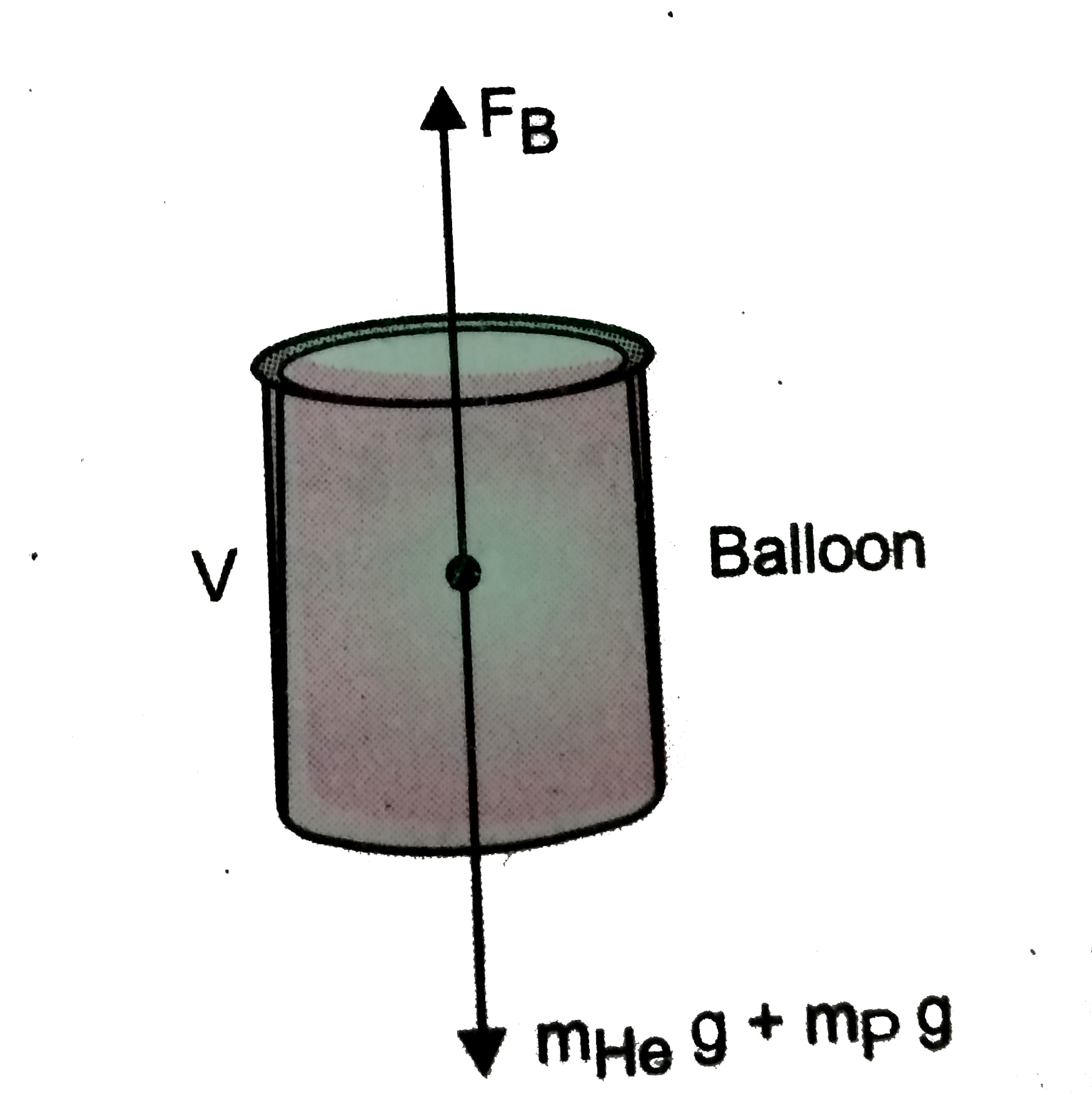NASA is experimenting with balloons for use on ultralong duration (100 days) flight around the Earth. Consider a balloon that has the shape of a cylindrical chamber which is 35 m tall with 30 m radius, and is made of extremely light plastic. If our model cylindrical balloon is filled with helium gas, what is the mass of the maximum payload it could lift from the Earth's surface? (Given ρair=1.29kgm3. ρHe)=0.18kgm3. Why would NASA design the balloon so large?
Video Solution
Text Solution

As FB=ρairVg=mHeg+mPg=ρHeVg+mPg
mPg=ρairVg−ρHeVg
or mP=(ρair−ρHe)V=(ρair−ρHe)(πr2h)
=(1.29−0.18)(kgm3)(3.14)(30m)2(35m)
=1.1×105kg
This payload is quite large, most scientific payloads would have a much smaller mass, density of decrease as the balloon moves up in the atmosphere and the lower density at high altitudes decreases Lifting capability of the balloon will need to have a much greater lift force at ground level.
|
Updated on:21/07/2023
Topper's Solved these Questions
Similar Questions
Knowledge Check
- Question 1 - Select One
Which gas is filled in the balloon?
AHydrogenBCarbon dioxideCHeliumDOxygen - Question 2 - Select One
A rubber balloon filled with hydrogen gas is left free in air. Then the balloon
Aescapes into space.Bascends upto a certain height in air and floats.Cascends upto a certain height and then descends back to ground.Dascends upto acertain height and explodes - Question 3 - Select One
A helium-filled balloon will float in air because
Athere is more air than helium.Bhelium is as dense as air.Chelium is less dense than air.Dhelium is more dense than air.
Balloon 'A' is filled with air and Balloon 'B' is filled with H2 gas. Which balloon rises higher up in the sky and why?
View SolutionThe air if filled in a balloon and the volume of balloon increases gradually. Find the rate of increase of volume of balloon with radius when of balloon becomes 30 cm.
View SolutionA closed cylindrical can has to be made with 100m2 of plastic. If its volume is maximum, then the ratio of its radius to the height is
View SolutionA balloon of mass m is rising up with an acceleration a.
View SolutionA balloon filled with helium (32∘Cand1.7atm) bursts. Immediately afterwards the expansion of helium can be considered as:
View Solution

